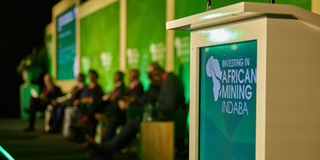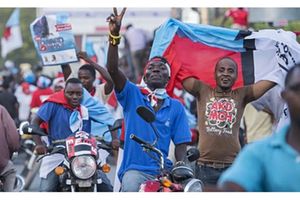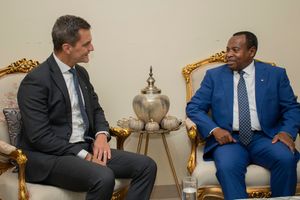Tanzania @ the Mining Indaba 2024

For mining stakeholders all roads led to Cape Town this last weekend, in anticipation of the 30th Mining Indaba, themed “Embracing the power of positive disruption: A bold new future for African mining”, that runs from today 5 February to 8 February. The conference theme recognises the need for the African mining industry to adapt to changes necessary to progress, such as advancements in technology, health & safety, environment and exploration. The aim is to focus on the real issues and unpack the true investment inhibitors and how they feed into challenges for new opportunities. Which is timely and very close to home, as we reflect on the sector in Tanzania.
The Government signed a number of framework agreements in the last 3 years for the development of mining projects. The combined estimated capital expenditure requirements are circa USD3bn - mostly in critical minerals (nickel, rare earths, graphite). Of the eight projects for which agreements signed, one (the smallest of the projects) has moved to production, but the rest have yet to progress to development.
This year Tanzania will be very clear stating its intent, with a very strong delegation at the Indaba comprising both Government and private sector representatives, carrying the theme: “Advancing mining investment to accelerate prosperity”. This is a very welcome development that signifies joint commitment to progressing mining projects.
Attendance this year is particularly timely, not least given the topical matters on the agenda. This includes “Global Electronic and Automotive Producers Talkshop - Can Africa play a meaningful role?”, which will address among others the importance of accessing critical minerals. Another topic is “Disrupting Tax Systems - New Win-Win Approaches to Spur Mining Sector Investment and Employment” which will address the opportunities presented by the rapidly growing need for critical minerals and how investors and governments share the rewards and risks in a way that attracts more investments, among others.
For Tanzania it is important to recognise that capital is mobile, and so in order to take advantage of the opportunities presented by the current global needs for critical minerals, resolution of any hurdles impeding investment in these minerals should be a priority. So what might some of these challenges be? Well, a number are on the taxation side including in relation to project financing, VAT refunds, the basis for calculation of taxable income, and alignment around what is “equitable sharing” of project returns.
The most immediate issue, “the 800-pound Gorilla”, relates to the project financing. Given the risky nature of the industry and significant capital requirements, mining companies often raise funding for development either (i) from large capital markets by an overseas listed entity holding shares in an entity in Tanzania or (ii) by bringing in another mining company with a strong balance sheet as an investor. However, where such funding dilutes the existing ultimate shareholding in the Tanzanian entity by more than 50%, the legislation contemplates a taxable event in Tanzania. Unless resolved by appropriate legislative intervention, this matter risks becoming a “show stopper” for a number of projects looking to move to development.
VAT is another concern bearing in mind the large project values with most of these projects having initial development capital expenditure in excess of USD100m and one in excess of USD1bn. The concern is with the timelines for refund of VAT (charged at a rate of 18%) that will be charged on development expenditure. Put simply, if VAT refund delays are protracted, a funding cost of USD100m or USD1bn could instead become USD118m or USD1.18bn.
Once a project moves into production, the calculation of taxable income comes into focus. One feature for the sector is that the US Dollar (USD) is the normal functional currency, in that mining expenditure and mineral prices are mostly denominated in USD. Therefore the underlying calculations to assess viability of projects are denominated in USD. Consistent with this, at one time mining companies had the right to calculate their tax liability and file their tax returns in USD. However, this right is no longer automatic, but rather contingent on approval by the Tanzania Revenue Authority (TRA”). Further, even where such an approval exists, TRA’s recent interpretation is that the approval does not apply to filing of returns but rather for financial records. The practical inability to prepare USD based tax calculations does then risk exposure to diminution of the USD value of deductible expenditure (much of which is claimed as tax depreciation or tax losses several years after being incurred) if there is any devaluation of the TZS against USD.
Another “fly in the ointment” was an amendment made last year to disallow royalty costs - something that will result in tax being applied to a number higher than the economic profit, and which will ultimately have a significant adverse impact on investor returns. Certainly, amongst mining jurisdictions to my knowledge, Tanzania is an outlier by adopting this treatment, and I doubt if any of the Tanzania delegation attending Indaba will find any other country represented there that adopts such a treatment. Our neighbors Zambia had such a provision a couple of years back and recently reversed it considering the impact it had.
Mining projects normally have a long life, which necessitates some degree of fiscal predictability, in addressing the sharing of risks and rewards between the Government and the investor. The practice in several jurisdictions is to have binding agreements between an investor and the Government to provide for fiscal stability and investor’s protection against amendments that are detrimental to their projects. In Tanzania’s case, Article 6 of the model framework agreement (FWA) set out in the Mining (State Participation) Regulations 2022, covers fiscal provisions and simply refers to the provisions of prevailing tax law but with no express stabilisation. At the same time, the model FWA does also provide for “equitable sharing” of economic benefits between the Government and the investor, but “equitable sharing” itself is not defined.
So what is the Government’s share of benefits? Well, it includes revenue based levies (royalties, inspection fee and service levy - cumulatively a maximum of 7.3%), profit based (corporate tax 30%, Government free-carried interest 16% and withholding tax on dividends 10%). The return to the investor will generally comprise dividends.
If one assumes a project with a 20% profit margin, the respective share of Government to investor take is around 61:39. This calculation assumes that taxable income is calculated on the basis (i) application of USD accounting, (ii) deductibility of all operating costs (including royalties, CSR). It also takes no account of other taxes generated (for example, employment taxes and withholding taxes), nor of the timing of returns (in particular, whereas the Government receives revenues from the start of operations, the investor has to wait until a dividend is paid).
Overall, whilst the FWA seeks to achieve stability through equitable sharing mechanisms, the jury is still out as to whether the existing regime achieves the required balance.
Whatever the case, this year’s strong Tanzania representation at Indaba, both the Government and the private sector, is certainly a statement of intent and commitment to face and address any challenges, and so drive the sector forward. As one of those attending, I look forward to fruitful engagement @ The Mining Indaba 2024!
Redempta Maira is an Associate Director, Tax Services with PwC Tanzania




